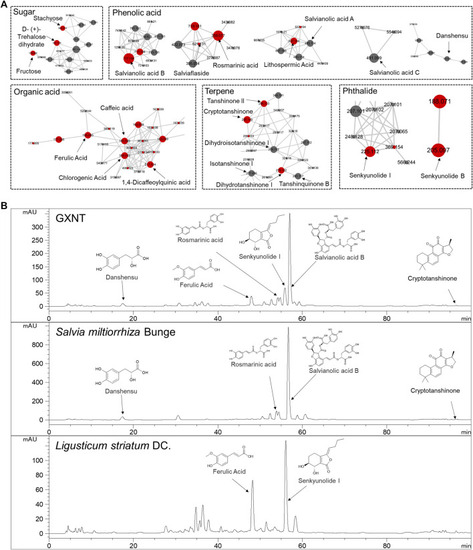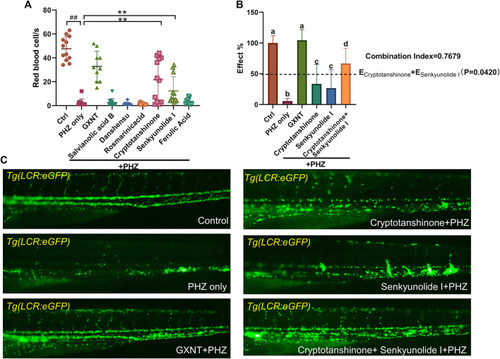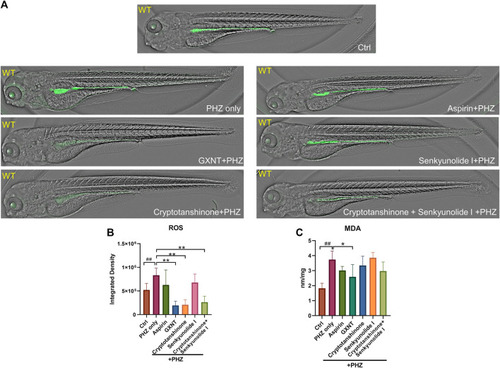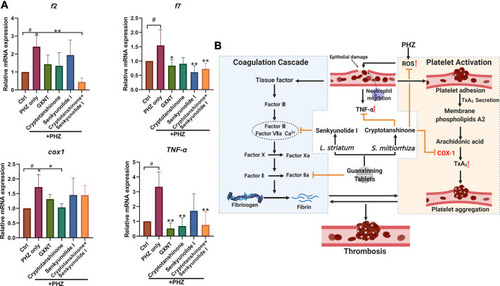- Title
-
Synergistic Effects of Cryptotanshinone and Senkyunolide I in Guanxinning Tablet Against Endogenous Thrombus Formation in Zebrafish
- Authors
- Li, J., Liu, H., Yang, Z., Yu, Q., Zhao, L., Wang, Y.
- Source
- Full text @ Front Pharmacol
|
GXNT restored blood circulation in PHZ-stimulated zebrafish thrombosis model. |
|
GXNT restored platelet circulation and inhibited hemolysis in PHZ-stimulated zebrafish thrombosis model. |
|
Characterization of the chemical composition in GXNT. |
|
Cyptotanshinone and senkyunolide I showed synergistic anti-thrombotic effects in PHZ-stimulated zebrafish. |
|
GXNT and cryptotanshinone inhibits oxidative damages in PHZ-stimulated zebrafish. (A,B) Representative images (A) and quantification (B) of the fluorescence signals of DCFH-DA probe in 3.5 dpf control embryos or PHZ treated embryos with or without drug protection. (C) Concentration of MDA in embryos with different treatment. #Compared with the control group; *compared with the model group; *p < 0.05, ## or **p < 0.01. |
|
Expression of representative factors in coagulation cascade and platelet activation in PHZ-stimulated zebrafish. |






